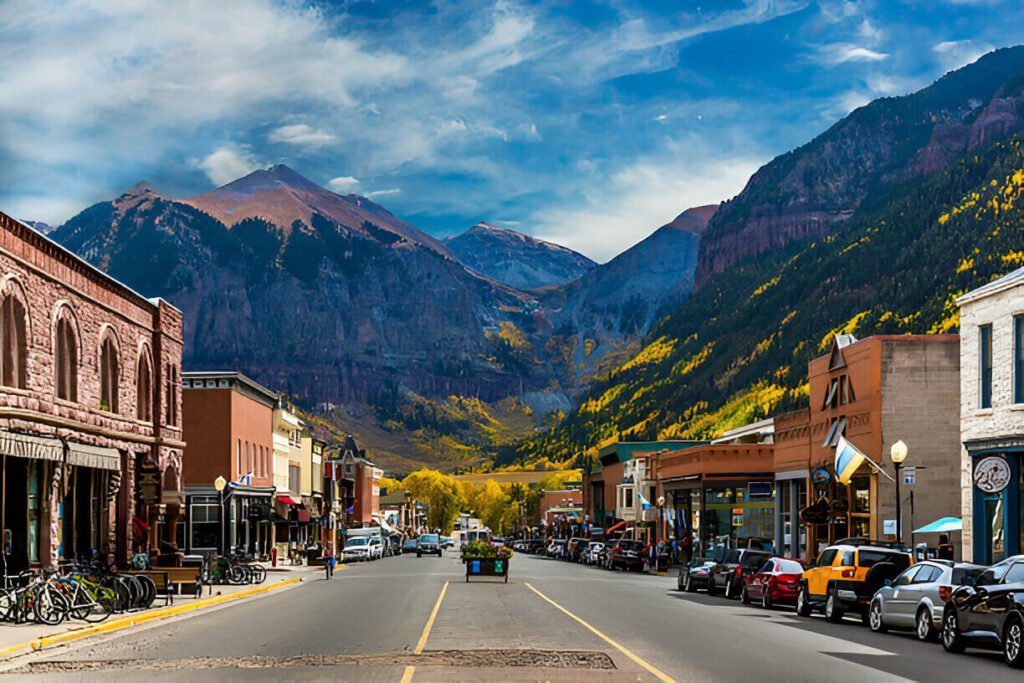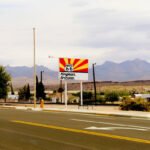For many, the dream of owning land in Colorado to build a rustic cabin and live off-grid is an enticing one. Visions of crisp mountain air, starry nights, and a simple self-sufficient lifestyle away from the hustle of cities fuel this fantasy. In the remote reaches of southern Colorado’s Costilla County, that dream seems tantalizingly affordable with land available for just a few hundred dollars per acre.
However, as with most things that seem too good to be true, there are substantial caveats and downsides to consider before taking the plunge on cheap land in Costilla County. This rugged, sparsely populated region presents a harsh reality compared to glossy imaginations. In this post, we’ll expose the real reasons behind rock-bottom land prices, the realities of what life is like in this isolated high-desert environment, and the crucial due diligence required to avoid pitfalls when purchasing cheap acreage here.
Costilla County: A Remote Mountain Desert
Nestled in the southern reaches of Colorado, where the Rocky Mountains give way to the high desert plains, lies Costilla County – a rugged and isolated region that epitomizes the state’s wild, untamed spirit. With a population density that hovers around just two people per square mile, this vast expanse of land is a true haven for those seeking solitude and escape from the hustle of modern life.
At elevations ranging from 7,500 to over 14,000 feet, Costilla County is a high-altitude wonderland, where the air is thin and crisp, and the views stretch endlessly across a tapestry of peaks, valleys, and arid landscapes. Despite its breathtaking natural beauty, this area remains largely undeveloped, with limited infrastructure and amenities to support a thriving population.
Small towns like San Luis, the oldest permanent settlement in Colorado, dot the map, offering a glimpse into the region’s rich Hispanic heritage and agricultural roots. However, beyond these tiny outposts of civilization, the county is a vast expanse of wilderness, where the nearest grocery store, hospital, or reliable internet connection can be hours away.
It’s this very remoteness and lack of modern conveniences that both attracts and challenges those who dream of carving out a life in Costilla County. With limited paved roads, sporadic electricity, and a scarcity of municipal services, the reality of living here requires a level of self-sufficiency and resilience that few are truly prepared for.
Land Grant History and Land Scams
The history of land ownership in Costilla County is a tangled web dating back to the Mexican era land grants of the 1800s. The San Luis Valley was originally deeded to Hispanic settlers by the Mexican government as part of the Sangre de Cristo Grant. After the Mexican-American War, the region became part of the United States and was opened up to homesteading.
This set the stage for unscrupulous land speculators to swoop in. They would subdivide the vast land grants into small parcels and market them sight-unseen to easterners and Europeans dreaming of staking a claim in the Wild West. Often the land promoters would make grandiose promises of lush farmland and resources that didn’t exist on the high desert properties.
Many buyers paid for deeds to landlocked parcels with no access or water rights. Some didn’t even realize the specific land they had purchased until arriving in Colorado. This legacy of shady land scams is part of why there is still such a surplus of unwanted, cheap land available in Costilla County today as heirs try to offload inherited desert lots.
Why Is Land So Cheap In Costilla County Colorado
The stunningly low prices for land in Costilla County can be attributed to its extremely remote location and lack of amenities that most buyers desire. Tucked away in the southern reaches of Colorado along the New Mexico border, this rugged high desert region offers few creature comforts.
With no nearby cities of any size, basic utilities like electricity, water, and high-speed internet are virtually non-existent across the vast stretches of this valley. Emergency services and other municipal resources are extremely limited due to the sparse population density. Simply getting building materials trucked in is a costly endeavor.
The lack of zoning laws and development regulations is a double-edged sword. While it allows more freedom in how you use your land, it also means your neighbors could construct anything from a junkyard to an industrial operation right next door with no recourse.
Low demand is likely the biggest factor depressing land values. This is not an area prized for its amenities or natural splendor like popular Colorado mountain towns. With a harsh high desert climate, short growing season, and lack of economic opportunities, there just isn’t a lot of competition for snatching up parcels here.
Even basic construction faces an uphill battle in this isolated, infrastructure-starved region. Hauling in equipment, labor, materials, and setting up temporary utilities makes building anything beyond a rudimentary cabin exorbitantly expensive. Landing proper permits and inspections can also be challenging.
Realities of Buying Cheap Land in Costilla County
While the prospect of snagging acres of Colorado land for just a few thousand dollars is enticing, there are harsh realities that come with purchasing cheap parcels in Costilla County. One of the biggest hurdles is securing financing, as most lenders are extremely wary of making loans on remote, undeveloped land with questionable access and no infrastructure. Even if you can pay cash, obtaining permits for building can be an uphill battle with the county, and finding insurance for a rural homestead is challenging.
The climate itself is no easy feat, with Costilla’s high altitude desert experiencing bitter cold winters and an extremely arid climate year-round. The short growing season makes large-scale agriculture difficult. Many of the cheap land parcels are also completely landlocked by surrounding private property, with no legal access road, making it impossible to even visit or camp on your own land.
Despite the bargain-basement pricing, property taxes are still owed annually on these cheap parcels, even if the land is unusable or inaccessible. This creates a continuous carrying cost that can quickly diminish the initial cost-savings. Overall, while enticing on the surface, prospective buyers need to go into a Costilla County land purchase with open eyes on the very real hardships and limitations.
Due Diligence for Prospective Buyers
Before taking the plunge on a cheap land purchase in Costilla County, prospective buyers need to do thorough due diligence. Inspecting the land in-person is critical – don’t just rely on listings or descriptions. Walk the full parcel, note any easements or access issues, and assess the feasibility of bringing in utilities. Research water rights thoroughly as well.
Investigating titles, deeds, and any legal claims on the property is also essential. The history of land scams in the region means you need to verify ownership and boundaries. Obtain a full title report and have it reviewed by a real estate attorney.
Check with county officials on any building restrictions, zoning rules, or special land use regulations that could impact your intended plans. Many parcels may have limitations on construction or certain activities.
Speaking with current residents and neighbors can provide invaluable insights into the realities of living in this remote area. Ask about challenges with infrastructure, climate impacts, availability of services, and any community issues.
Finally, carefully evaluate the potential costs of making the land usable and livable for your needs. An undeveloped parcel may require an expensive access road, drilling a well, bringing in utilities, and other pricey improvements before you can build. Prepare a realistic budget for these make-ready costs.
Living the Off-Grid Dream in Costilla County
Buying cheap land in Costilla County can make the dream of living off-the-grid a reality, but it comes with significant challenges that require careful preparation. The remote, high-altitude desert environment demands a rugged, self-sufficient lifestyle far removed from urban conveniences.
Water is the biggest obstacle, as the arid climate receives little annual precipitation. Drilling a well can cost $10,000+ with no guarantee of striking a reliable water source. Hauling water for domestic use and storing it in cisterns is often necessary. Solar or wind power systems provide electricity, but the upfront costs are substantial. Propane must be trucked in for heating and cooking.
Growing food is difficult at 8,000+ feet elevation with a short 3-4 month growing season. Greenhouses can extend the season, but require heating. Raising livestock like chickens or goats is more viable. Hunting, gathering wild edibles, and food preservation skills are essential.
Medical emergencies present major risks when the nearest hospital is over an hour away on rough roads. Self-care abilities and stockpiling supplies is prudent. Wildfires are a constant danger, so clearing defensible space and having emergency evacuation plans is critical.
The self-reliant, pioneering spirit required to homestead on cheap Costilla County land should not be underestimated. But for the prepared and dedicated, it offers a chance to unplug from the modern world into a simple life of freedom on one’s own land.
Land Costs and Property Taxes
In Costilla County, vacant land can be shockingly inexpensive, with prices often ranging from just $100 to $500 per acre for remote, unimproved parcels. More buildable lots closer to the few small towns may fetch $1,000 to $5,000 per acre. However, these rock-bottom prices come with significant caveats that prospective buyers must consider.
Despite the bargain costs, property taxes on vacant land in Costilla County are not necessarily low. Tax rates hover around 1% of the assessed value, which can still amount to hundreds of dollars annually even for a $500 per acre purchase price. And these taxes must be paid regardless of whether the land has any access or usability. Many parcels are completely landlocked by surrounding private lands with no legal access.
It’s also important to factor in the potential costs of making a vacant parcel actually usable and livable. Bringing in utilities, building access roads, drilling a well, installing septic, and trucking in building materials can easily add tens of thousands in expenses. The lack of basic infrastructure is a major reason why land is so cheap initially.
Climate and Geographical Factors
Costilla County’s high altitude desert environment presents some significant challenges for those seeking to live off-grid or build a remote cabin. At elevations ranging from 7,500 to over 14,000 feet, the air is thinner, temperatures are cooler, and the climate is more extreme.
The region is classified as a cold semi-arid climate, with low annual precipitation averaging only 7-12 inches per year. Much of this falls as snowfall during the winter months. Summers are hot and dry, with low humidity. The growing season is extremely short, often less than 90 days, due to the risk of killing frosts from late spring through early fall.
Water resources are very limited in this arid landscape. Many of the cheap land parcels have no surface water or groundwater rights. Hauling in water for domestic use and any agricultural needs can be costly.
The topography also factors in, with much of the county consisting of rugged mountains, mesas, canyons, and valleys. Accessing remote parcels requires rough dirt roads that can be impassable when wet. The high elevations and steep terrain make construction more difficult and expensive due to transportation costs.
Overall, the climate and geography present formidable challenges compared to more moderate, low-elevation areas. Proper preparation for water needs, cold winters, and building requirements is essential before purchasing land here. The payoff can be the solitude and beauty of a remote high mountain desert setting.
Financing for Cheap Land Purchases
Obtaining traditional financing like a mortgage for inexpensive vacant land in Costilla County can be extremely difficult. Most banks and lenders are very hesitant to approve loans for properties with little to no infrastructure that are zoned for agricultural or ranch use only.
The lack of residential zoning, established utilities, and clear plans for development make these properties a risky investment in the eyes of most lenders. They fear being stuck with a worthless asset if the borrower defaults.
However, there are some alternative financing options that buyers can explore:
Owner Financing: Some motivated sellers may be willing to act as the lender themselves through a land contract or promissory note. This allows you to make payments directly to the current owner over time to eventually take full ownership.
Home Equity Loans: For those who already own a home, you may be able to leverage the equity through a loan or line of credit to cover the purchase of vacant land.
Private Money Lenders: There are private lending companies and individuals that specialize in financing for unique properties like vacant land, though interest rates are typically much higher.
Cash Purchases: With land this inexpensive, some buyers are able to pay the full cost upfront with cash savings. This avoids any financing requirements but does tie up a lot of capital.
No matter which route you choose, be prepared for a much more challenging and costly financing process compared to a typical residential mortgage. Having a clear plan for how you’ll develop and use the property can help improve your chances of securing funds.
Building Restrictions and Land Use Rules
In Costilla County, one of the major draws for buyers seeking cheap land is the lack of zoning regulations and building restrictions. Unlike many other parts of Colorado with strict residential zoning codes and homeowners associations dictating what you can build, Costilla has very few limitations in place.
This can be a double-edged sword, however. While the freedom to build virtually any structure you want on your land may sound appealing, it also means your neighbors could construct anything from a junkyard to an industrial operation right next door. There are no zoning buffers protecting residential areas.
For agricultural or business uses of the land, regulations are also quite lax compared to other counties. You’ll need basic permits for things like operating a commercial farm or ranch, but red tape is minimal. This allows more flexibility for those wanting to live off-grid and be self-sufficient.
However, the lack of oversight means you’ll need to be extra diligent about properly vetting your land parcel and surrounding area before purchasing. Talking to county officials and longtime residents is crucial to understand any unwritten rules, potential conflicts with neighboring land uses, or future development plans that could impact your property down the road.
While you may have the freedom to build a dream off-grid compound on your cheap Costilla acreage, you could also end up sandwiched between an industrial mining operation and a junkyard if not careful. Do your research on the lack of land use rules before buying.
Conclusion: Risks and Rewards of Chasing Cheap Land
Purchasing inexpensive land in Costilla County can be a tantalizing prospect for those dreaming of an off-grid lifestyle or a remote mountain retreat. However, as we’ve explored, this pursuit comes with significant risks and challenges that demand careful consideration and due diligence.
One of the major risks is the potential for land to be unusable or inaccessible, whether due to lack of legal access, lack of water rights, or other unforeseen issues. Even if the land itself is affordable, the costs of making it habitable – from building access roads to establishing utilities – can quickly escalate, turning a bargain into a financial burden.
Additionally, the remote location and harsh climate of Costilla County pose practical challenges for those unaccustomed to such an environment. The high altitude, arid conditions, and short growing season can make self-sufficiency and off-grid living far more difficult than anticipated.
Despite these risks, the rewards of successfully navigating the process and establishing a foothold in Costilla County can be immense. For those truly prepared for the realities of this region, the opportunity to live a remote, self-reliant lifestyle surrounded by stunning natural beauty can be a dream realized.
By thoroughly researching land titles, speaking with local officials and residents, and carefully evaluating the costs and logistics of making a property usable, determined buyers can increase their chances of success. With proper preparation, patience, and a willingness to embrace the challenges, the pursuit of cheap land in Costilla County can indeed lead to the fulfillment of off-grid living aspirations.

Aspiring U.S. Attorney with a Heart for Justice and Culture | Currently navigating the intricate path of U.S. law, I’m dedicated to becoming a skilled attorney. My journey intertwines the vibrancy of Reguetón and the rich cultural heritage of Cuba and Puerto Rico. From the breathtaking landscapes of Napoli-Salerno to the diverse cultures of Italy, Colombia, and the United States, my life is a tapestry of diverse experiences. And here, I’ll be your legal guide for your Scrap Safari in different states to keep you safe from every problem.


